#Solar tech
Explore tagged Tumblr posts
Text
#solar panels perth#Solar power perth#best solar panels in perth#buy solar panels perth#Solar power in Australia#Solar company Perth#Solar installation Perth#Solar panels price Perth#solar panel installers#solar technology australia#Solar tech#are solar panels a ripoff ?#where are solar panels used in australia#when were solar panels first used in australia#solar panels perth price#solar panels perth cost#cost of solar panels perth#Solar Rebate Perth#Install Solar Panels Perth#Solar power installers perth#solar panels installation perth#Photovoltaic system#Solar PV System#reliable photovoltaic installation perth#residential photovoltaic power supply#Commercial solar panel#commercial solar inspection#Solar system for commercial use#Solar Panel Inspection#residential solar panels
0 notes
Text

CITIZEN REGUNO H415-S057515 Radio Controlled SOLAR-TECH Watch
0 notes
Text
Solar Tech Systems | aussiesolartech.com.au
Solar tech systems harness and convert solar radiation into various forms of energy. They include photovoltaic (PV) technologies that directly convert sunlight into electricity; concentrating solar-thermal (CSP) technologies that generate power by using mirrors to concentrate sun’s heat; and electrical grid systems that integrate PV and CSP technology with traditional and other renewable sources.
Solar photovoltaic (PV) systems

Solar tech systems photovoltaic (PV) convert the Sun’s radiation into electricity. They can be used for homes or large electric utility and energy generation purposes. Individual solar cells produce only a small amount of power, so they are combined into modules and arrays to generate larger amounts. NREL researchers are working to improve the performance of PV cells so that they can meet the growing demand for clean, renewable energy.
NREL also conducts research to ensure that PV systems are properly sized to match their owners’ electricity usage. This includes determining how much electricity is needed and deciding what time of day the system should be operating so that it can take advantage of peak sunlight hours. Currently, most off-grid PV systems include batteries to allow them to continue producing electricity during cloudy conditions.
Concentrating solar-thermal (CSP) systems
CSP technologies capture the sun’s heat to drive a conventional steam turbine generator. They are often paired with thermal energy storage systems to provide flexible and dispatchable electricity.
Solar energy is focused by mirrors onto a receiver or engine that converts the thermal energy into electricity using a Rankine or Brayton cycle. There are two major types of utility-scale CSP: power tower and linear concentrator.
Power tower systems use a network of sun-tracking mirrors that focus sunlight on the top of a central tower where a heat transfer fluid is heated to over 600oC. The steam drives a conventional turbine-generator to produce electricity.
Linear concentrator systems use parabolic trough collectors to concentrate sunlight into parallel tubes filled with a heat transfer fluid. These systems can either operate without storage, or with a thermal energy storage system like molten salt.
Sun-tracking systems
Solar tracking systems are designed to orient solar panels toward the sun as it rises and sets. This can lead to a significant boost in power production, which is why it’s worth the additional expense of installing these systems on your rooftop.
There are several types of solar trackers, with a single-axis solar system offering the most cost-effective solution. These trackers move on one axis and are aligned northsouth and east-west. These are also known as vertical single-axis trackers or VSATs.
Dual-axis trackers are more expensive and require additional maintenance.
However, they can improve your solar energy output by up to 40%. These are often used in commercial applications. They have a more complex control system and are based on a computer-based algorithm. They can be more prone to failure than static solar panels.
Perovskite solar cells
Perovskite solar cells (PSC) have high efficiencies and are currently being extensively researched. However, they are not yet ready for commercialisation. This is because they have stability issues and need to be improved, optimised and scaled for large areas of device.
The stability of these solar cells can be improved by adding tin to the mix. Tin is in the same column as lead on the periodic table and has a similar ionic size, so it can replace lead without negatively impacting the performance of the cell.
The NREL’s research in this area includes examining how the structure of a perovskite cell can be altered to improve stability. Another focus is improving the fabrication process for these devices. This includes reducing the number of heating and coating steps, and using roll-to-roll processing.
Cadmium telluride solar cells
Cadmium telluride solar tech cells use a thin semiconductor layer to absorb and convert sunlight into electricity. They are more efficient than crystalline silicon panels and can operate in higher temperatures. They can also withstand more moisture.
The Ohio-based companies First Solar and Toledo Solar make cadmium telluride solar panels. Their products compete with crystalline silicon systems, which represent the majority of the world’s solar panels.
The cadmium telluride industry is less vulnerable to supply chain interruptions than the crystalline silicon sector, Mansfield said. The materials needed per panel are relatively small, and better ways to refine them could maximize their availability. The industry is also less dependent on foreign supplies, and can use byproducts from mining ores. It is less carbon-intensive than crystalline solar technology, and can recycle end-of-life modules.
#solar tech systems#solar panel install#solar panel installation#solar tech#solar panel installation Canberra
0 notes
Text
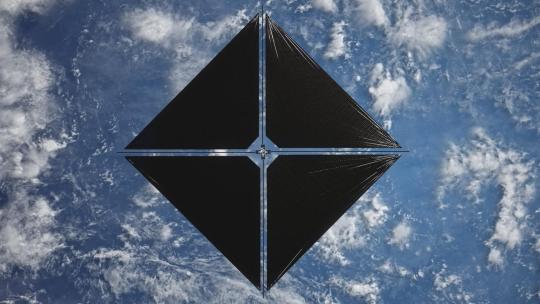
Setting Sail to Travel Through Space: 5 Things to Know about our New Mission
Our Advanced Composite Solar Sail System will launch aboard Rocket Lab’s Electron rocket from the company’s Launch Complex 1 in Māhia, New Zealand no earlier than April 23, at 6 p.m. EDT. This mission will demonstrate the use of innovative materials and structures to deploy a next-generation solar sail from a CubeSat in low Earth orbit.
Here are five things to know about this upcoming mission:
1. Sailing on Sunshine
Solar sails use the pressure of sunlight for propulsion much like sailboats harness the wind, eliminating the need for rocket fuel after the spacecraft has launched. If all goes according to plan, this technology demonstration will help us test how the solar sail shape and design work in different orbits.

2. Small Package, Big Impact
The Advanced Composite Solar Sail System spacecraft is a CubeSat the size of a microwave, but when the package inside is fully unfurled, it will measure about 860 square feet (80 square meters) which is about the size of six parking spots. Once fully deployed, it will be the biggest, functional solar sail system – capable of controlled propulsion maneuvers – to be tested in space.
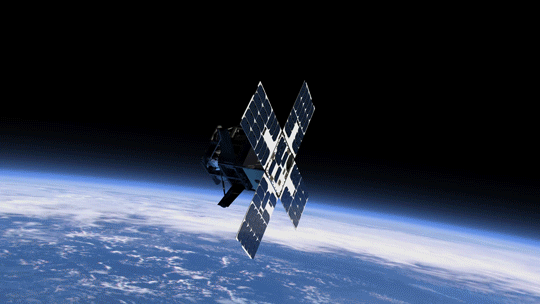
3. Second NASA Solar Sail in Space
If successful, the Advanced Composite Solar Sail System will be the second NASA solar sail to deploy in space, and not only will it be much larger, but this system will also test navigation capabilities to change the spacecraft’s orbit. This will help us gather data for future missions with even larger sails.
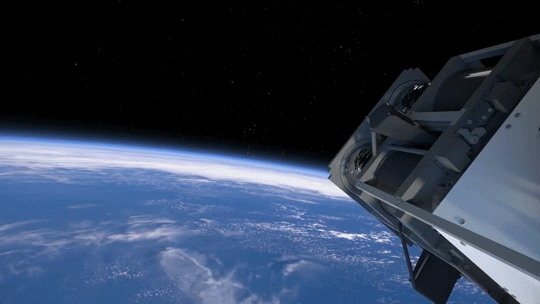
4. BOOM: Stronger, Lighter Booms
Just like a sailboat mast supports its cloth sails, a solar sail has support beams called booms that provide structure. The Advanced Composite Solar Sail System mission’s primary objective is to deploy a new type of boom. These booms are made from flexible polymer and carbon fiber materials that are stiffer and 75% lighter than previous boom designs. They can also be flattened and rolled like a tape measure. Two booms spanning the diagonal of the square (23 feet or about 7 meters in length) could be rolled up and fit into the palm of your hand!

5. It’s a bird...it’s a plane...it’s our solar sail!
About one to two months after launch, the Advanced Composite Solar Sail System spacecraft will deploy its booms and unfurl its solar sail. Because of its large size and reflective material, the spacecraft may be visible from Earth with the naked eye if the lighting conditions and orientation are just right!
To learn more about this mission that will inform future space travel and expand our understanding of our Sun and solar system, visit https://www.nasa.gov/mission/acs3/.
Make sure to follow us on Tumblr for your regular dose of space!
2K notes
·
View notes
Text
ECLIPSE :D!!!


#solar eclipse#ring of fire 2023#ecplise#the sun went bye bye#i don’t have the tech to photograph the sun just the ground#very very cool#there was visible cheering when it was fully ecplised#*audible#from the neighborhood#i got to see the whole ring of fire :)
2K notes
·
View notes
Text
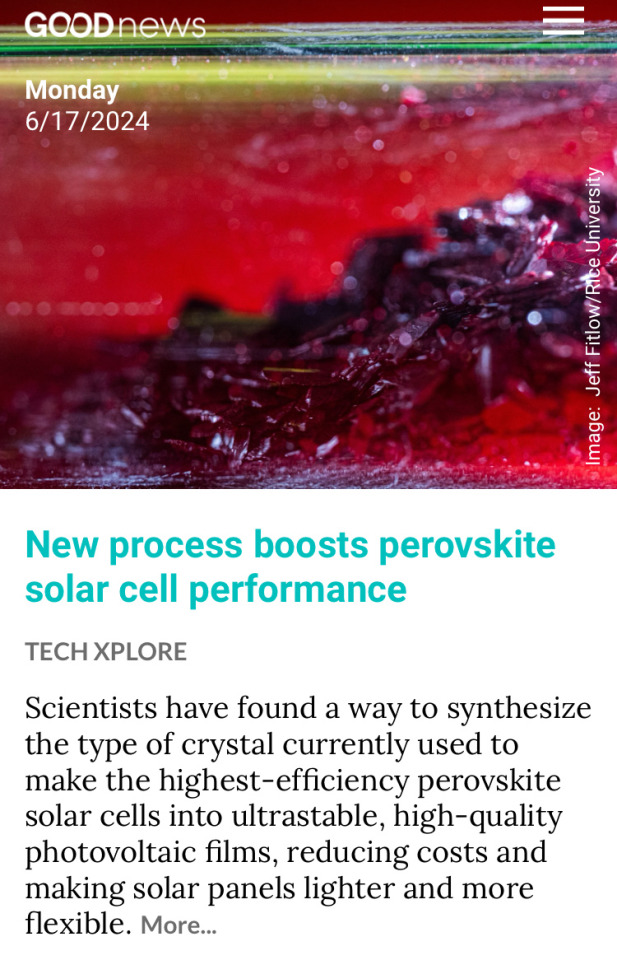
148 notes
·
View notes
Text



sʜᴀɴᴇ ᴅʀɪɴᴋᴡᴀᴛᴇʀ Untitled (2022-2024). Acrylic and collage on vintage sewing pattern paper: each measures approximately 22 × 22 in (55 × 55 cm).
#earth#sun#moon#stars#art#2020s#shane drinkwater#space#astronomy#science#tech#sky#universe#planets#solar system#nature#acrylic#collage#comet#cosmos#painting#☄️
48 notes
·
View notes
Text
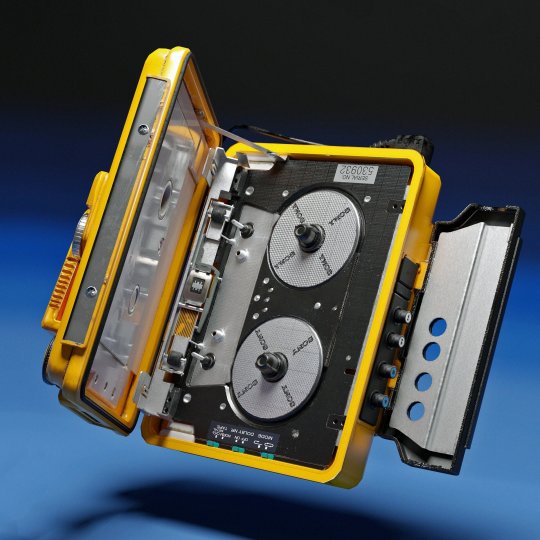
136 notes
·
View notes
Text
Solar Panel Inspection in Australia: Ensuring Efficiency and Longevity
As solar energy continues to grow in popularity across Australia, maintaining and optimizing solar systems has become increasingly important. Regular solar panel inspection is crucial for ensuring that photovoltaic (PV) systems operate efficiently and safely. Whether for residential, commercial, or large-scale solar farms, inspections help identify potential issues early, maximizing energy output and system longevity. In this blog, we will explore the importance of solar panel inspection, key inspection procedures, government regulations, and best practices for Australian solar system owners.
Why is Solar Panel Inspection Important?
Maximizing Efficiency Over time, dust, dirt, bird droppings, and other debris can accumulate on solar panels, reducing their efficiency. Regular inspections ensure that panels remain clean and function optimally.
Safety Assurance Faulty wiring, damaged panels, or loose connections can pose fire and electrical hazards. Routine inspections help identify potential risks before they become serious problems.
Extending System Lifespan Solar panels are designed to last 25-30 years, but poor maintenance can shorten their lifespan. Inspections help detect wear and tear early, preventing costly repairs and replacements.
Maintaining Warranty Validity Many manufacturers require regular inspections and maintenance to keep warranties valid. Neglecting inspections could result in voided warranties, leaving system owners responsible for costly repairs.
Compliance with Australian Regulations In Australia, solar panel installations must comply with safety and performance standards. Regular inspections ensure that systems meet local regulations and remain eligible for government incentives.
Key Components of a Solar Panel Inspection
A thorough solar panel inspection involves multiple steps to assess both the physical and electrical aspects of the system. Some of the key inspection areas include:
Visual Inspection
Checking for cracks, chips, or discoloration on the solar panels.
Inspecting for loose mounting brackets or frame damage.
Identifying any shading issues from trees, buildings, or new obstructions.
Electrical System Check
Testing voltage output to ensure the system is generating the expected power.
Inspecting wiring, junction boxes, and connectors for signs of corrosion, fraying, or overheating.
Verifying that the inverter is functioning correctly and displaying no error codes.
Performance Monitoring
Comparing energy production data with previous readings to detect efficiency drops.
Using infrared (thermal) imaging to identify hotspots that may indicate faulty cells.
Cleaning Assessment
Evaluating panel cleanliness and recommending professional cleaning if necessary.
Ensuring that drainage pathways are not blocked, preventing water accumulation.
Battery and Storage Inspection (if applicable)
Checking battery health and charge retention.
Inspecting battery storage location for proper ventilation and temperature control.
Government Regulations and Standards in Australia
In Australia, solar panel installations and inspections must comply with strict safety and performance guidelines. Some key regulations include:
Clean Energy Council (CEC) Accreditation: Installers and inspectors should be CEC-accredited to ensure compliance with Australian standards.
AS/NZS 5033:2021: This standard outlines requirements for the installation and maintenance of PV arrays.
Electrical Safety Inspections: Solar systems must be inspected periodically to ensure they meet state and territory electrical safety regulations.
Government Incentives Compliance: To remain eligible for Small-scale Technology Certificates (STCs) and feed-in tariffs, solar systems must be properly maintained and periodically inspected.
Best Practices for Solar Panel Inspection in Australia
Schedule Regular Inspections It is recommended that solar panels be inspected at least once a year, with additional inspections after extreme weather events such as hailstorms or bushfires.
Hire Professional Inspectors While basic visual checks can be done by homeowners, professional inspections ensure that electrical components and performance metrics are accurately assessed.
Monitor System Performance Many modern solar systems come with monitoring apps that track energy production in real time. Sudden drops in output may indicate a need for inspection.
Keep Panels Clean Regular cleaning can improve efficiency. However, it is advisable to use professional cleaning services to avoid damaging the panels.
Address Issues Promptly If an inspection reveals problems such as broken panels, faulty wiring, or inverter malfunctions, repairs should be done immediately to prevent further damage.
The Future of Solar Panel Inspection in Australia
As technology advances, solar panel inspection methods are becoming more sophisticated. Some emerging trends include:
Drone Inspections: Equipped with thermal imaging cameras, drones can efficiently inspect large solar farms and detect faults without manual labor.
AI-Powered Diagnostics: Artificial intelligence and machine learning are being used to analyze solar system performance and predict maintenance needs.
Automated Cleaning Systems: Robotic cleaners and self-cleaning panels are being developed to reduce the need for manual cleaning.
With the continued growth of solar energy in Australia, these innovations will make solar panel inspections more efficient, reducing maintenance costs and improving system performance.
Conclusion
Regular solar panel inspection is essential for maximizing the efficiency, safety, and lifespan of solar systems in Australia. Whether for residential rooftops or commercial installations, routine inspections help detect potential issues early, ensuring optimal performance. With government regulations, incentives, and technological advancements driving the solar industry forward, maintaining solar panels through professional inspections is more important than ever. Investing in regular inspections is a proactive step toward long-term savings and a sustainable energy future for Australia.
If you own a solar system, scheduling a professional inspection today can help keep your panels in top condition and ensure they continue to provide clean, cost-effective energy for years to come.
#solar panels perth#Solar power perth#best solar panels in perth#buy solar panels perth#Solar power in Australia#Solar company Perth#Solar installation Perth#Solar panels price Perth#solar panel installers#solar technology australia#Solar tech#are solar panels a ripoff ?#where are solar panels used in australia#when were solar panels first used in australia#solar panels perth price#solar panels perth cost#cost of solar panels perth#Solar Rebate Perth#Install Solar Panels Perth#Solar power installers perth#solar panels installation perth#Photovoltaic system#Solar PV System#reliable photovoltaic installation perth#residential photovoltaic power supply#Commercial solar panel#commercial solar inspection#Solar system for commercial use#Solar Panel Inspection#residential solar panels
0 notes
Photo

CITIZEN INDEPENDENT 8637-R007041 SOLAR TECH Wrist Watch
0 notes
Photo

nasa: A stone cold look at Saturn 🗿
The giant planet gives us a look into its moody disposition. The Cassini spacecraft captured this image on Jan. 30, 2007, from a distance of 700,000 miles (1.1 million kilometers). As Saturn’s atmosphere rages with thunderous and hurricane-like storms, its majestic rings spin a tale of ancient collisions and cataclysms. A joint endeavor of NASA, @europeanspaceagency, and @agenziaspazialeitaliana, Cassini was a sophisticated robotic spacecraft sent to study Saturn and its complex system of rings and moons over the course of a decade. Lessons we took from Cassini helped in the planning of our #EuropaClipper mission, which is on its way to Jupiter and expected to arrive in April 2030. Image description: A black-and-white image of Saturn taken from a lower angle. The rings of Saturn frame the upper right portion of the planet in various widths. Details of stripes and swirls from storms can be seen along the face of the planet. The left side of the planet is encompassed in a shadow. Credit: NASA/JPL-Caltech/Space Science Institute #NASA #Space #Saturn #Rings #Storms #Atmosphere #Moody #Planet #SolarSystem #BlackAndWhite
#nasa#esa#asi#space#saturn#cassini#jpl#jpl-caltech#cal tech#space science institute#planet#rings#storm#atmosphere#solar system#astronomy#space exploration#2007#january 30
25 notes
·
View notes
Note
Lucy lives!au where both lucy and desmond are tensely sitting on the fact that Clay Told Desmond She Is A Templar and neither of them know how to approach this without outing that fact to everyone (Desmond does not want his dad to kill her)
OUGHHHH.
and the way it completely flips the little power dynamic they had going on. because whether desmond likes it or not, whether he wants it or not, lucy's life is now completely at his mercy. one wrong word and. well. they're called assassins for a reason. and while i think there's multiple stories in the series of assassins becoming templars, there's basically none about templars becoming assassins (or assassins again) which tells you about all you need to know about how willing they'd be to let a "traitor" back into their little gang.
and that's just got to feel terrible, right? especially now that desmond knows. if he can just read between the lines of what lucy has told him about vidic from her perspective, what clay has shown him about how she was turned. terrible awful moment of realizing that it's playing out all over again; only now lucy owes her life to him for not giving her over to the assassins. i don't think desmond would like that at all.
and like. to me there is zero question that part of the reason lucy latched onto desmond more than she was probably supposed to according to the whole templar double-agent plan was that he was someone she had a modicum of control over. she was very much in control of the flow of information to him, he owed her for getting him out of abstergo, and in all likelihood, she probably intended to protect him from them as best he could (a track record which does not reflect well on her! considering what happened to clay! but i really do think she intended to.)
so, that is gone. not only is that gone, but her world's been up-ended, again. she's not a quite a templar, not quite an assassin, and oh, right, the sun is still going to explode, and they barely know how they're going to stop it. desmond was in a coma for who knows how long, and now he looks at her different. he knows. and now they're all going to be in close proximity with his dad and her mentor who will not risk the whole world for either of them, shaun's still being twitchy about 'what if desmond was a templar spy' with no idea how close and how far off that assumption is, and there's also that fucking alien isu ghost lady who tried to kill her through desmond! not a fun time for lucy, all things considered.
and like despite that, i think the old dynamic they had still remains. desmond relies on lucy. she's now proven that she's a completely unreliable anchor to reality, but still, she's the one he's got. they started this animus shit together; they're gonna finish it together. lucy is still trying to pull the incredible balancing act of pushing desmond far enough to get what they need without breaking him entirely, something that's getting harder and harder by the day because like. three. well, no, four, huh. haytham, too. so four memory dives in, there's... if not damage, then a disconnect. between desmond and reality. that can't be undone, only managed.
everything that happens already leaves their little team so isolated from the outside world, but alsjdlksa i fucking love the idea of lucy & desmond being even isolated from the other assassins. terrible secret gang.
#the best gift i can give to any character set is to shoot them with the isolated codependency beams#i think. let lucy live and desmond has someone to bounce his thoughts off of for 'fuck what if the assassins *can't* handle this'#in a way that might be. like. a little productive?#because okay cool isu tech might save them. they also have no guarantees that it will beyond like. hope and ghost alien lady's words.#i don't think lucy could convince desmond that abstergo/the templars want what's best.#but i do think that they could both pull each other closer to a middle ground.#like. abstergo bad. but they also fucking live there. on the planet. if the solar flare happens they die too. so like.#clearly they also want to stop it. to what extent is probably the questionable bit! they'd probably let the majority of humanity#get scorched to preserve what they want.#but undeniably. they have resources the assassins do not. lucy knows what those resources are.#keep her in the game and desmond knows what plan B is. whether or not it even comes down to using it.#thinks about them trying to plot this. and that lingering tension between them that exists because lucy lied once and might be lying now#and desmond is choosing to trust her while there's a ghost of clay in the back of his head screaming at him that he's an idiot#and they can't let any of the others catch on to the fact that they're even *considering* abstergo's resources as a possibility.#ask#assassin's creed#lucy stillman#desmond miles#puts them in the worst situations <3 because i love them <3#also i think desmond and lucy should get to kill vidic together. catharsis.
16 notes
·
View notes
Text

Let's Explore a Metal-Rich Asteroid 🤘
Between Mars and Jupiter, there lies a unique, metal-rich asteroid named Psyche. Psyche’s special because it looks like it is part or all of the metallic interior of a planetesimal—an early planetary building block of our solar system. For the first time, we have the chance to visit a planetary core and possibly learn more about the turbulent history that created terrestrial planets.
Here are six things to know about the mission that’s a journey into the past: Psyche.

1. Psyche could help us learn more about the origins of our solar system.
After studying data from Earth-based radar and optical telescopes, scientists believe that Psyche collided with other large bodies in space and lost its outer rocky shell. This leads scientists to think that Psyche could have a metal-rich interior, which is a building block of a rocky planet. Since we can’t pierce the core of rocky planets like Mercury, Venus, Mars, and our home planet, Earth, Psyche offers us a window into how other planets are formed.
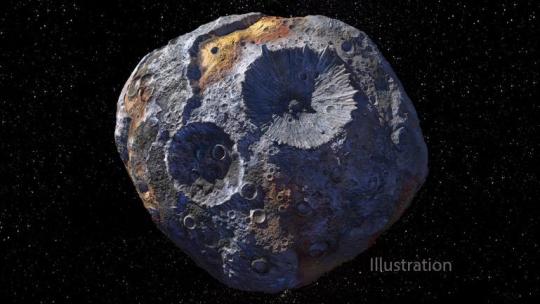
2. Psyche might be different than other objects in the solar system.
Rocks on Mars, Mercury, Venus, and Earth contain iron oxides. From afar, Psyche doesn’t seem to feature these chemical compounds, so it might have a different history of formation than other planets.
If the Psyche asteroid is leftover material from a planetary formation, scientists are excited to learn about the similarities and differences from other rocky planets. The asteroid might instead prove to be a never-before-seen solar system object. Either way, we’re prepared for the possibility of the unexpected!

3. Three science instruments and a gravity science investigation will be aboard the spacecraft.
The three instruments aboard will be a magnetometer, a gamma-ray and neutron spectrometer, and a multispectral imager. Here’s what each of them will do:
Magnetometer: Detect evidence of a magnetic field, which will tell us whether the asteroid formed from a planetary body
Gamma-ray and neutron spectrometer: Help us figure out what chemical elements Psyche is made of, and how it was formed
Multispectral imager: Gather and share information about the topography and mineral composition of Psyche
The gravity science investigation will allow scientists to determine the asteroid’s rotation, mass, and gravity field and to gain insight into the interior by analyzing the radio waves it communicates with. Then, scientists can measure how Psyche affects the spacecraft’s orbit.
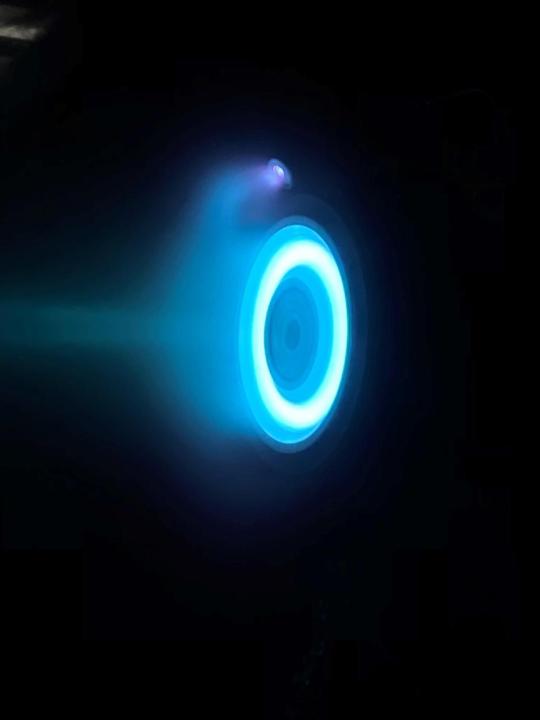
4. The Psyche spacecraft will use a super-efficient propulsion system.
Psyche’s solar electric propulsion system harnesses energy from large solar arrays that convert sunlight into electricity, creating thrust. For the first time ever, we will be using Hall-effect thrusters in deep space.
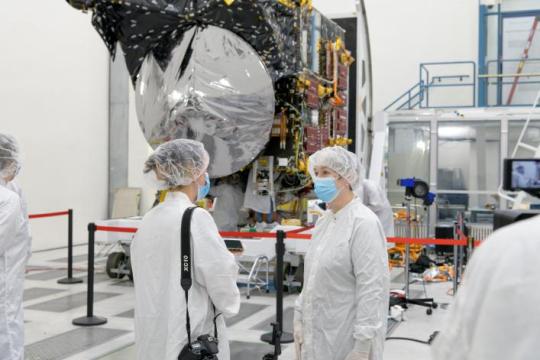
5. This mission runs on collaboration.
To make this mission happen, we work together with universities, and industry and NASA to draw in resources and expertise.
NASA’s Jet Propulsion Laboratory manages the mission and is responsible for system engineering, integration, and mission operations, while NASA’s Kennedy Space Center’s Launch Services Program manages launch operations and procured the SpaceX Falcon Heavy rocket.
Working with Arizona State University (ASU) offers opportunities for students to train as future instrument or mission leads. Mission leader and Principal Investigator Lindy Elkins-Tanton is also based at ASU.
Finally, Maxar Technologies is a key commercial participant and delivered the main body of the spacecraft, as well as most of its engineering hardware systems.
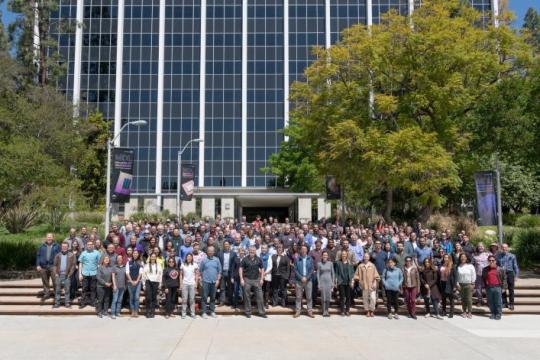
6. You can be a part of the journey.
Everyone can find activities to get involved on the mission’s webpage. There's an annual internship to interpret the mission, capstone courses for undergraduate projects, and age-appropriate lessons, craft projects, and videos.
You can join us for a virtual launch experience, and, of course, you can watch the launch with us on Oct. 12, 2023, at 10:16 a.m. EDT!
For official news on the mission, follow us on social media and check out NASA’s and ASU’s Psyche websites.
Make sure to follow us on Tumblr for your regular dose of space!
#Psyche#Mission to Psyche#asteroid#NASA#exploration#technology#tech#spaceblr#solar system#space#not exactly#metalcore#but close?
2K notes
·
View notes
Text
totally love this: Solar panels that produce energy and water from the air.
The energy helps to extract the water which can be applied to the panels to help reduce temperatures, thereby improving energy output; or, the water can be dripped under the panels to grow crops (which also reduces temperature, in addition to providing food). OR, the water can be sent to a system for human use (needs minerals added to be safe for drinking; also may need some further decontamination to be safe to drink).
But basically the idea is that you can plop one of these down just about anywhere in the world, including extremely dry regions, and it will immediate help provide energy and drinking water. Put it over barren land, and you have an easy system for growing food.
I can envision large plots of formerly barren land, now providing electricity, food, and water. I can also see it being really helpful in developing areas, especially as the world's water crisis deepens. Really looking forward to seeing more and improved products like this.
p.s. pure water needs minerals added otherwise it messes up our cells. but minerals are just, like, bits of rock. So I'm curious if pure water can be made to drinking water more easily by putting it in the ground and letting it fill natural aquifers or wells or something like that. Maybe even a sort of specially dug "well" that aims to capture the water after it percolates through earth. I'm no expert on this. Thoughts?
30 notes
·
View notes
Text
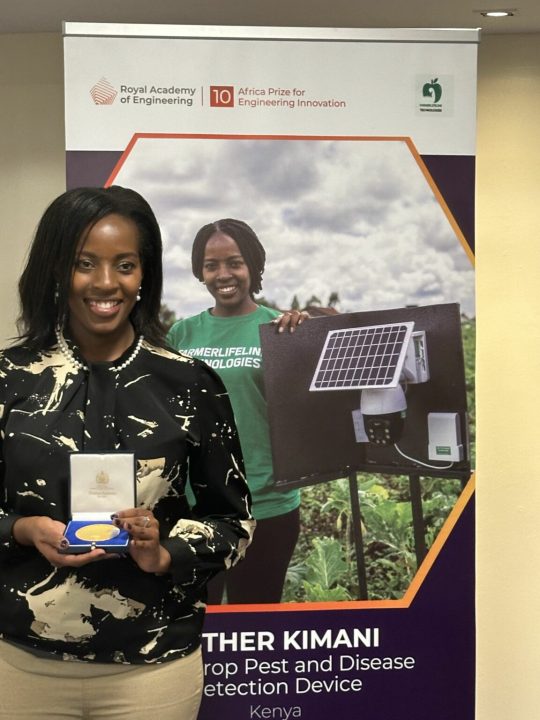
Esther Kimani, a computer programmer from Kenya, has won the UK’s Royal Academy of Engineering’s Africa Prize for Engineering Innovation. Her groundbreaking early crop pest and disease detection device wowed the judges, thanks to its remarkable ability to swiftly detect and identify agricultural pests and diseases. This innovative tool can reduce crop losses for smallholder farmers by up to 30% and boost yields by as much as 40%.
Harnessing the power of solar energy, the device employs computer vision algorithms and advanced machine learning to detect and identify crop pests, pathogens, or diseases, and the nature of the infection or infestation. Farmers receive notifications via SMS, making this an affordable alternative to traditional detection methods at just $3 per month—significantly cheaper than hiring drones or agricultural inspectors.
source
#solarpunk#solar punk#africa#ai#solarpower#agriculture#mobile tech#pest#solar power#solarpunk innovation#kenya#women#woman
17 notes
·
View notes
Text
I cannot recommend this podcast interview with Cory Docotorow enough. It's about so much more than green tech and enshittification. anyone who uses the internet should listen.
#podcast#podcasts#Cory Docotorow#solar punk#green energy#climate change#climate crisis#enshittification#internet#tech bros#technology#canada#european union#monopoly#right to repair#capitalism is a scam#privacy#green technology#cars#computers#linux#social media#neoliberalism#economics#economy#fair trade#open source#union workers#labor vs capital#labor movement
7 notes
·
View notes